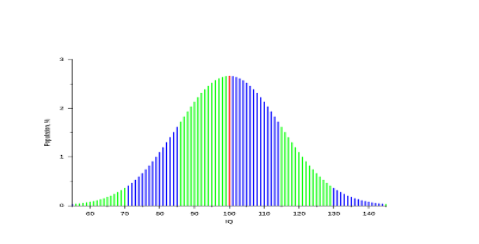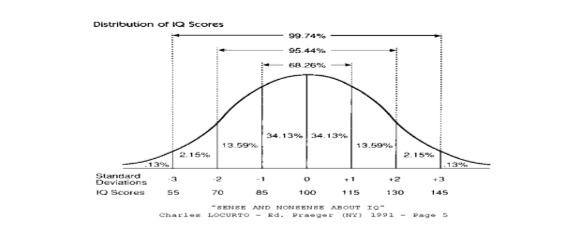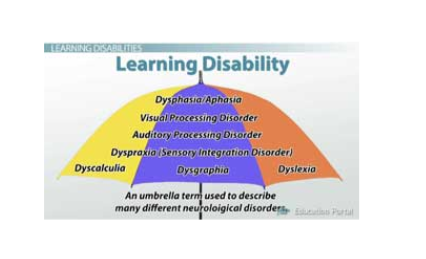- Home
- About Us
- Crisis Line & Resources
-
Our Services
- Psychiatry
- Psycho & Behavioral Therapy
- After School Program
- Special Education Program
- Occupational Therapy
- Physical Therapy
- Respiratory Therapy
- Speech Therapy
- Conditions Treated
- Co-occurring Disorders Treatment
- DOT Certification
- General Medicine
- IQ Testing
- Psychological Evaluation
- SPECIALIZED SERVICES
- Treatment Gambling Addiction
- Hospital Services
- Courses
- Compliance
- Employees
- Blog
- Contact Us
IQ Testing Services
Medicaid, Medicare & Commercial/Private Insurances!
What is IQ?
An IQ, or intelligence quotient, is a score you receive on a test that assesses intelligence. When you take an IQ test, you are compared to people who have taken the test before. Prior to the release of the test, the writers of the IQ test had several hundred, sometimes more than a thousand, people assessed.
Calculating the IQ Score
IQ is a comparison of your test results to the results of people your own age. The average IQ is
100. If you gave 1,000 people a really hard test, your results would look like this:
The higher the graph goes, the more people who have achieved that score. As you can see from
the graph, there is a bell-shaped distribution. Most people are in the center, but some people
score really well, and some people score really poorly. By having the IQ average at 100, scores
can go high or low and still make sense because of their relationship to 100.
The different colors of this graph are standard deviations. Standard deviation is a mathematical
way of grouping people together. If you look at the red line on 100, the blue group to the right is
considered one positive standard deviation. In that blue group is 34.1% of the population. If you
combine it with the green group just to the left of the red line, you have everything within one
standard deviation of the average (average is 100), or 68.2% of the population. Remember, one
standard deviation= 34.1%, by combining both above and below the standard deviation you get
68.2%. Standard deviations allow for easy groupings and predictions.
What does all this mean? A standard deviation in IQ points is 15, so 68.2% of the population will
have scores between 85 and 115. This is labeled an average IQ, which is just a name for a group
of people scoring around the average score. This name for a group helps make it easier to group
test takers together.
About 95.4% of the population will have an IQ score between 70 and 130, which is everyone
within two standard deviations. Scores that are between 70 and 85 may be labeled below
average, while scores between 115 and 130 could be labeled above average.
Types of IQ Tests
Multiple tests have been created to test for IQ, and there is general agreement on the scores provided by each one. However, on some tests, certain people will do better and on other tests, certain people will do worse. Here are some common tests, as listed by Indiana University.
The Stanford-Binet Intelligence Scales, Fifth Edition, for ages 2-90+: Is a full-scale test that
also covers fluid reasoning, quantitative reasoning, knowledge, visual-spatial processing, and
working. In addition, the test compares verbal to nonverbal abilities.
The Wechsler Intelligence Scale for Children, Fourth Edition, for ages 6-16: Provides a full-
scale assessment and also assesses working memory, verbal comprehension, perceptual
reasoning, and processing speed. It is extremely similar to the WAIS but is made for children.
The Woodcock-Johnson III Tests of Cognitive Abilities, for ages 2-90+: Measures a large age
group's general intellectual ability in addition to working memory and execution function.
The Cognitive Assessment System for ages, 5-17: Takes a more theoretical approach,
measuring planning abilities, attention span, and simultaneous and successive cognitive
processes.
The Wechsler Adult Intelligence Scale (WAIS), for ages 16-89: Is an IQ test designed for
those using adult thinking, which provides a full-scale score and scores for verbal, processing
speed, perceptual, and working memory.
The Comprehensive Test of Nonverbal Intelligence, for ages 6-18. Uses a nonverbal method
to assess children without traditional biases found with language barriers. Six subtests assess
various nonverbal intellectual skills.
The Universal Nonverbal Intelligence Test, for ages 5-17. Uses a similar tactic as the previous
test in that it does not use verbal commands or answers, instead using an entirely nonverbal
administration and response method.
The Kaufman Assessment Battery for Children, for ages 2-6 to 12-5: Looks primarily at simultaneous and sequential processing skills in addition to academic achievement.
Learning Disabilities
Learning disability is an umbrella term used to describe many different neurological disorders.
How an individual becomes learning disabled is still a mystery. However, it is theorized that
learning disabilities are caused by a glitch in the nervous system. Theses glitches affect each
person differently. For example, some individuals have difficulty concentrating while others
have difficulty with motor skills. Children with learning disabilities have a glitch in how their
brains are wired so that they might have difficulty with reasoning, spelling, writing and reading
There are many different types of learning disabilities, and as such, the term learning
disability should be thought of as an umbrella term used to describe a student who doesn't learn
in the mainstream way.
Specifically, a learning disability is defined as an impairment that interferes with the student's academic performance. The key point here is that the disability is explicit towards a particular area of learning. For example, a student may be able to read but not be able to write (What is IQ? - Tests & Definition, 2015)
Identifying Children with Learning Disabilities
Identifying children with a learning disability can be tricky because it can be confused with a lack of interest in a school subject. We must be able to identify the three most common learning disabilities: dyscalculia, dysgraphia and dyslexia. The disorders are often described as disabilities because they may interfere with the student's ability to learn. Many students with a learning disability have average or above-average intelligence. However, many students with a learning disability also struggle with other disorders, such as Autism and ADHD.
Common Types of Learning Disabilities
The three most common learning disabilities are dyscalculia, dysgraphia, and dyslexia. The
prefix 'dys-' is Greek meaning 'an impairment of,' so the three most common disabilities are an
impairment of doing math, writing or reading.
Dyscalculia is a learning disability involving math. There is no single type of math disability,
and individuals with dyscalculia have a lifelong learning disability. Dyscalculia can also affect
people differently at different stages of their lives. Having trouble understanding math does not
indicate dyscalculia. Symptoms of dyscalculia vary greatly; however, some common symptoms
are the inability to recognize sequences and inability to recall math facts. In order to be
successful in math, you have to have a good memory, be able to recognize sequences and have
good organizational skills. A student with dyscalculia may have these skills in other areas, but in
math, these skills are not present. For example, a student may be able to recall facts like football
statistics but may not be able to recall their multiplication tables.
Dysgraphia is a learning disability that affects writing, which requires a complex set of motor
skills. Dysgraphia covers the physical act of writing, comprehension and synthesizing
information. Just having sloppy handwriting doesn't indicate dysgraphia. Symptoms of
dysgraphia include difficulty with writing letters and words, organization of thoughts and
consistency in neatness.
Dyslexia is a learning disability that impairs a person's language ability. Students with this disability may have difficulty with reading, writing or spelling. Just being a slow reader or poor speller does not indicate dyslexia. Symptoms include difficulties with reading comprehension and inability to understand the meaning of words. (Learning Disabilities: How to Identify Children with a Learning Disability, 2013)
Least Restrictive Environment
Students with special needs were not always allowed in the mainstream classroom. In fact, just a
few decades ago, students with learning disabilities were routinely segregated away from their
classmates.
However, the Individuals with Disabilities Education Act (IDEA) requires that all students with learning disabilities be taught in the least restrictive environment. The essence of this requirement is to ensure that students are not unnecessarily removed from the mainstream classroom or isolated away from their peers (Educating Students with Special Needs, 2012)
References
Educating Students with Special Needs. (2012, December 11). Retrieved from
https://study.com/academy/lesson/educating-students-with-special-needs.html.
Learning Disabilities: How to Identify Children with a Learning Disability. (2013, January 8).
Retrieved from https://study.com/academy/lesson/learning-disabilities-how-to-identify-children-
with-a-learning-disability.html.
What is IQ? - Tests & Definition. (2015, June 7). Retrieved from https://study.com/academy/lesson/what-is-iq-tests-definition-quiz.html.





